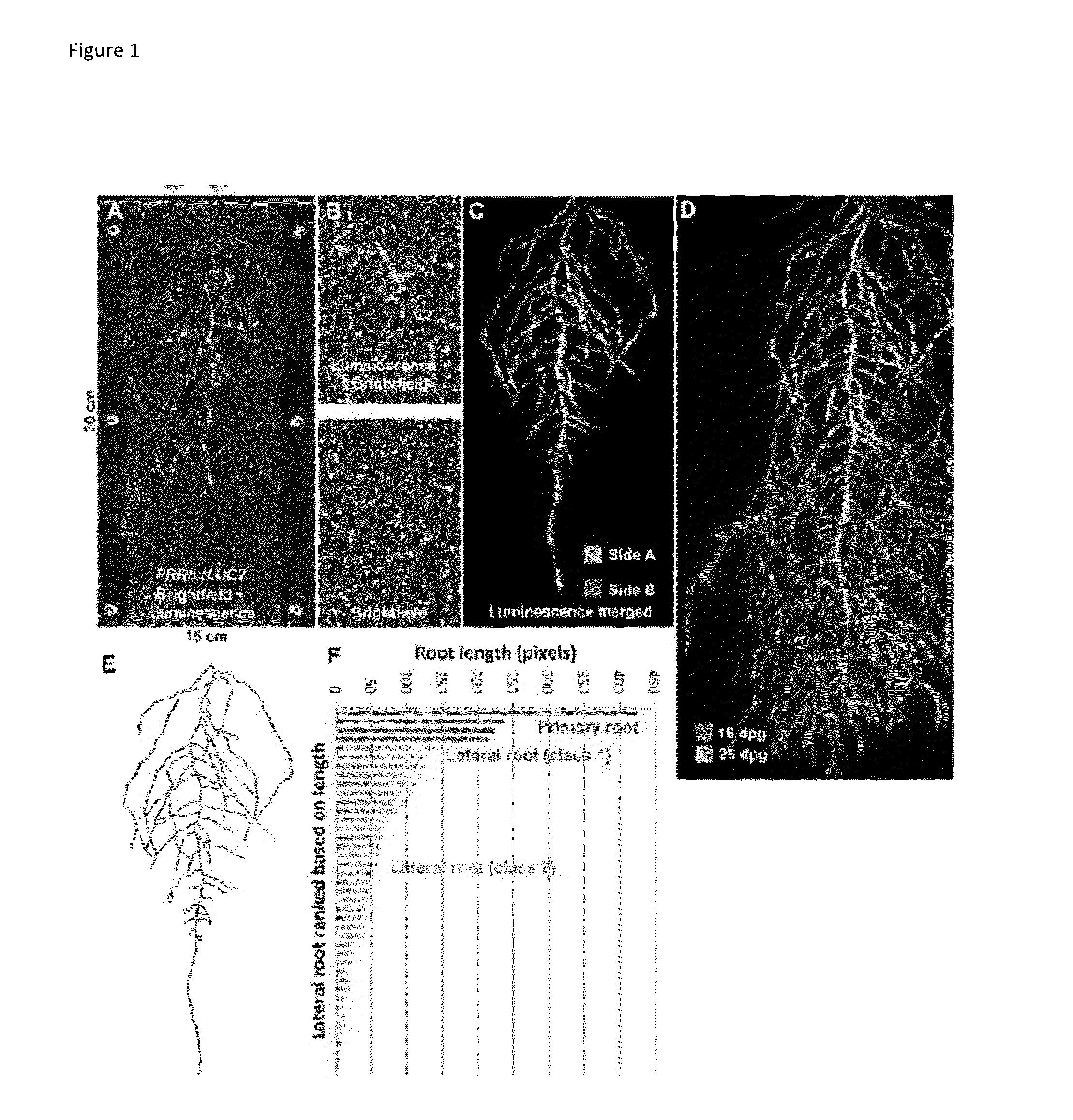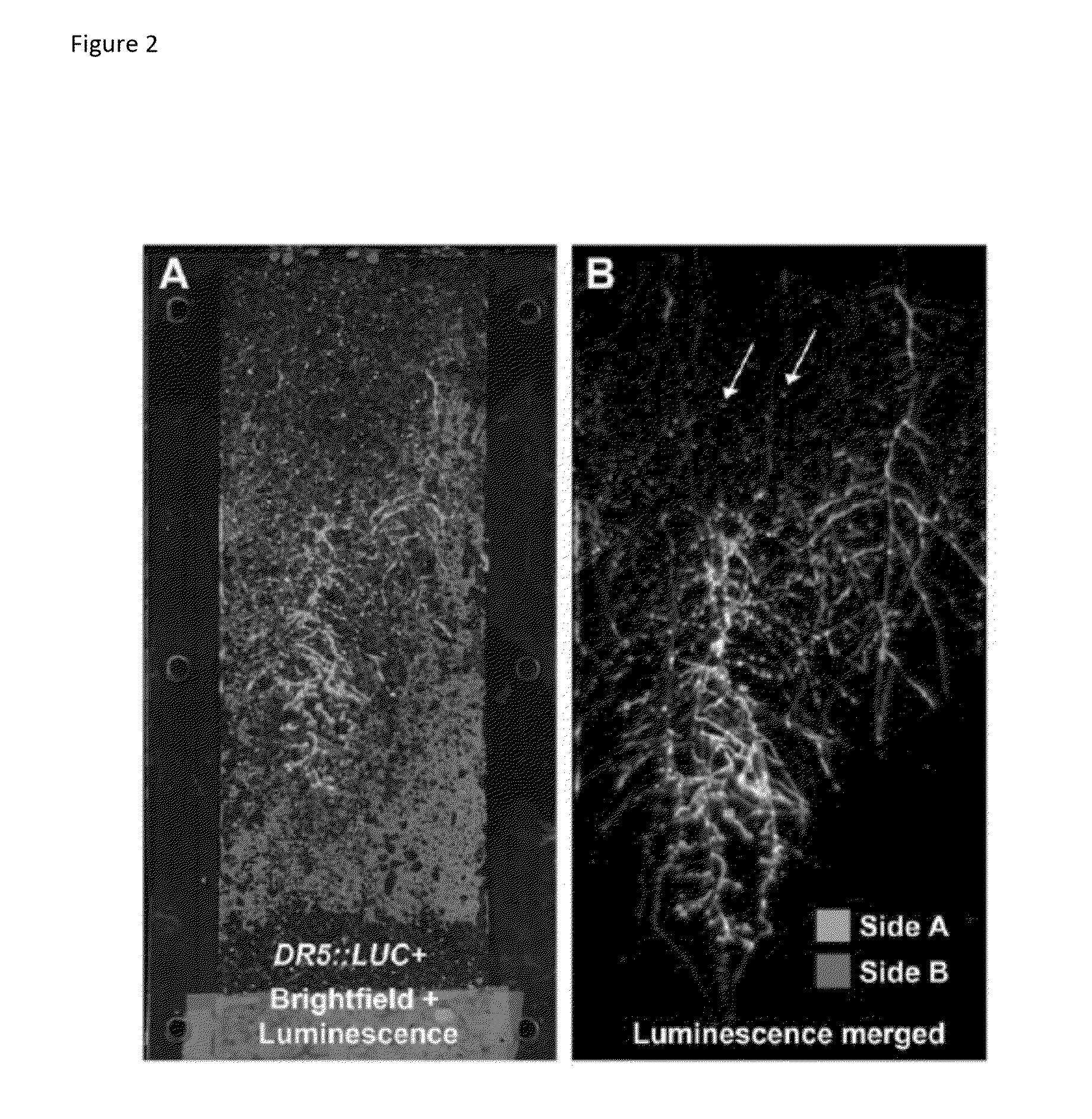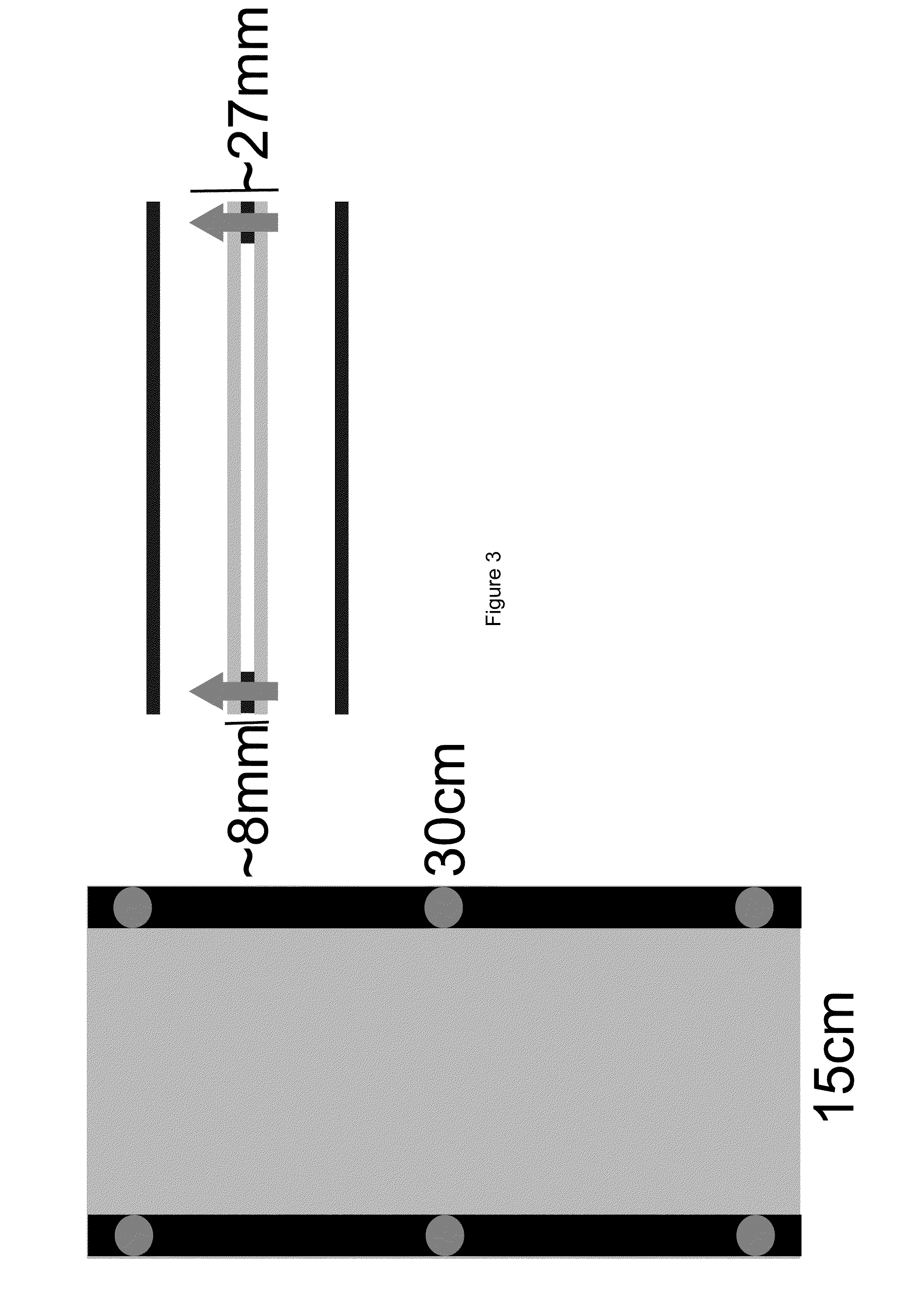Luciferase Reporter System for Roots and Methods of Using the Same
a reporter system and luciferase technology, applied in the field of luciferase reporter system for roots and methods of using the same, can solve the problems of inability to resolve structures, limited understanding of root development and physiology in the natural soil context, and utilizing expensive equipmen
- Summary
- Abstract
- Description
- Claims
- Application Information
AI Technical Summary
Benefits of technology
Problems solved by technology
Method used
Image
Examples
example 1
Design and Implementation of GLO-Roots, a High Resolution Root Growth and Imaging Platform to Quantitate Root System Dynamics in Soil
[0072]Sheets of polycarbonate plastic were used to create thin chambers (2 mm in thickness), which were filled with soil (FIG. 1A). These chambers were placed in a container that shields light from the root system, but permits illumination of the shoot and transpiration to occur normally. Water supply was controlled by computer and moisture of the soil monitored using a capacitance sensor, or such parameters can also be controlled manually.
[0073]To visualize the root system, Arabidopsis thaliana plants were engineered to constitutively express Luciferase (LUC), a reporter protein that emits light when the substrate D-luciferin is added. These plants contained the GLO-Roots system using a PRR5::LUC2 reporter line, which was strongly expressed in the root. Luminescence was measured on both sides of the rhizotron (dubbed side A and B) and a composite imag...
example 2
Generation and Analysis of Developmental and Physiological Reporters for Molecular Phenotyping of the Root System in Soil
[0077]The development of a phenotyping platform based on LUC expression has the advantage that other non-constitutive promoters can be used as well. For example, the regulatory regions of genes involved in osmotic stress response (e.g. RD29Ap) (Yamaguchi-Shinozaki, K. and Shinozaki, K. (1993) ‘Characterization of the expression of a desiccation-responsive rd29 gene of Arabidopsis thaliana and analysis of its promoter in transgenic plants’, Mol Gen Genet 236(2-3): 331-40), nitrate response (e.g. 4xNREp) (Konishi, M. and Yanagisawa, S. (2011) ‘Roles of the transcriptional regulation mediated by the nitrate-responsive cis-element in higher plants’, Biochemical and biophysical research communications 411(4): 708-13), bacterial elicitor response (e.g. CYP71A12p) (Millet, Y. A., Danna, C. H., Clay, N. K., Songnuan, W., Simon, M. D., Werck-Reichhart, D. and Ausubel, F. M...
example 3
Determining the Relationship between Soil Properties and Root System Architecture
[0078]The establishment of the GLO-Roots system may be conducted using a standardized potting mix, PRO-Mix, which contains Sphagnum peat moss, perlite, major- and micronutrients, dolomite and calcitic limestone. In addition, alternative growth media may be used to study the effect of varying soil properties on RSA. Part of these studies may utilize agriculturally relevant soils, such as natural Californian soils, to understand the range of phenotypic variation that occurs in these complex environments. Analysis of RSA features in these soils can help to identify variables that may be of interest for future studies.
[0079]Various types of soils may be utilized and varied for content, such as: (1) levels of nutrients, (2) exchangeable acidity, (3) textural class, and (4) organic content. Samples may be collected from various regions for comparison. Soils can also be collected in consultation with local ser...
PUM
 Login to View More
Login to View More Abstract
Description
Claims
Application Information
 Login to View More
Login to View More - R&D
- Intellectual Property
- Life Sciences
- Materials
- Tech Scout
- Unparalleled Data Quality
- Higher Quality Content
- 60% Fewer Hallucinations
Browse by: Latest US Patents, China's latest patents, Technical Efficacy Thesaurus, Application Domain, Technology Topic, Popular Technical Reports.
© 2025 PatSnap. All rights reserved.Legal|Privacy policy|Modern Slavery Act Transparency Statement|Sitemap|About US| Contact US: help@patsnap.com



